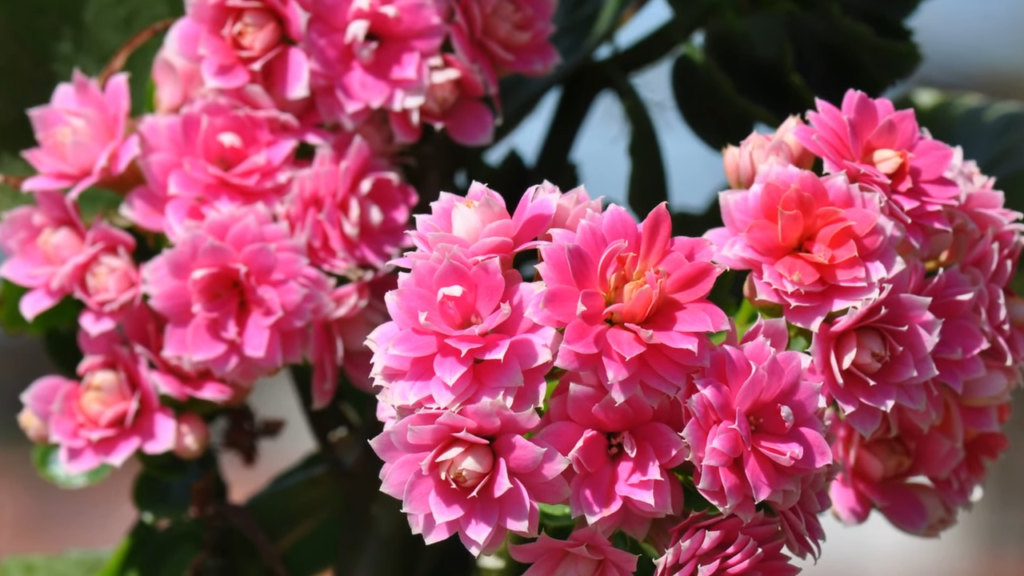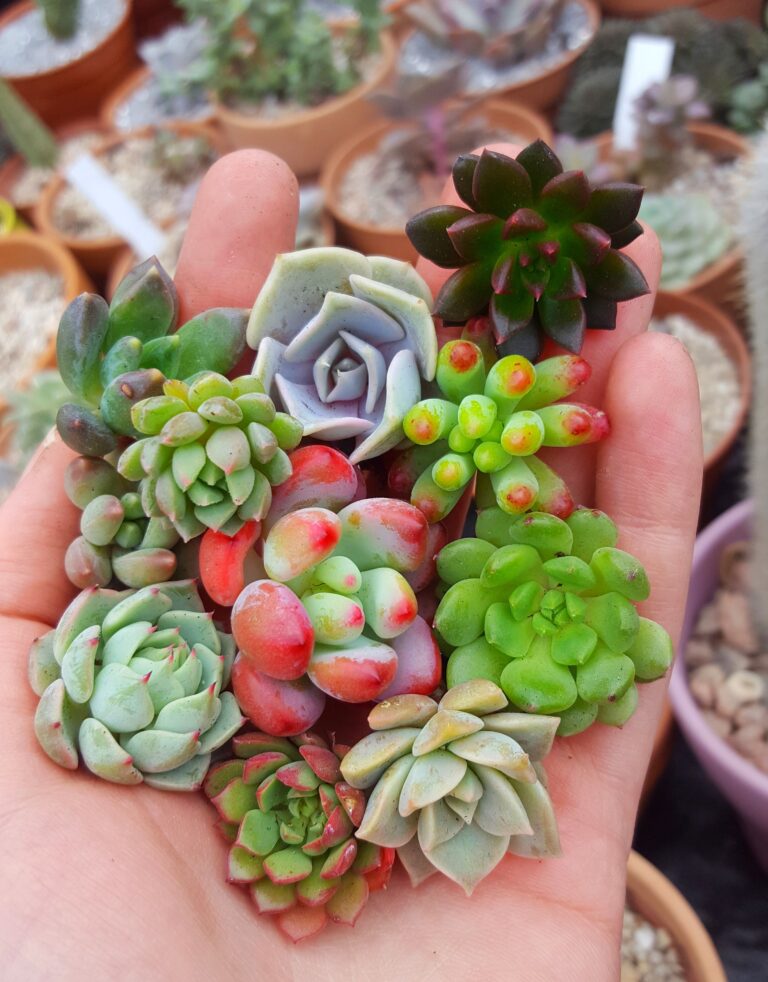Flaming Katy Pink Flowers
The Flaming Katy, scientifically known as Kalanchoe blossfeldiana, is a popular and easy-to-care-for plant. It was first described by Georg Joseph Kamel in 1831 and later introduced to the world by German botanist Robert Blossfeld in 1932.
Flaming Katy plants thrive in bright, indirect light and prefer temperatures between 55°F and 85°F. They can tolerate cooler conditions but don’t do well in extreme heat.
These plants require well-draining soil and should be watered sparingly to prevent overwatering. Their flowering season can last up to six months, and pruning can encourage more blooms. Flaming Katy can be grown from seeds or stem cuttings.
Keep in mind that the plant may be toxic to pets, so caution is advised if you have dogs or cats.
In summary, Flaming Katy is an attractive and low-maintenance plant that blooms for extended periods, making it a popular choice for both indoor and outdoor gardens.

For a Flaming Katy (Kalanchoe blossfeldiana) plant, it’s essential to use a well-draining soil mix to prevent waterlogged roots and promote healthy growth. Here’s a suitable soil mix and guidelines for when to change it:
Soil Mix for Flaming Katy:
- Use a commercial succulent or cactus potting mix as the base. These mixes are specifically designed to provide excellent drainage for succulent plants like Flaming Katy.
- You can further improve drainage by adding perlite or coarse sand to the potting mix. A common mix is 2 parts potting mix to 1 part perlite or sand.
- Make sure the soil mix has good aeration to allow roots to breathe and prevent excess moisture retention.
When to Change the Soil Mix:
Repotting: Repot your Flaming Katy every 2-3 years or when it outgrows its current container. This is an excellent time to refresh the soil mix. Choose a slightly larger pot to accommodate the growing plant.
Soil Depletion: Over time, the nutrients in the soil mix can become depleted, affecting the plant’s health and growth. If you notice decreased growth, yellowing leaves, or reduced flowering, consider changing the soil mix.
Root Issues: If you suspect root problems, such as root rot due to overwatering, it’s a good idea to change the soil when addressing the issue. Repot the plant into fresh, well-draining soil to help the roots recover.
Pest or Disease Concerns: If you’ve had issues with pests or diseases in your Flaming Katy, changing the soil during repotting can help remove any lingering pests or pathogens.
Loss of Aeration: If the soil mix becomes compacted or loses its aeration over time, it can impede drainage and root health. Changing the soil can rejuvenate the plant.
When changing the soil mix, follow these steps:
Gently remove the plant from its current pot, being careful not to damage the roots.
Shake off as much old soil as possible without harming the roots.
Place the plant in a new pot with fresh soil mix.
Water the plant lightly after repotting and allow it to adjust to its new soil.
Regularly changing the soil mix as needed will help keep your Flaming Katy healthy and thriving.
How often does flaming katy bloom?
Flaming Katy is known for its impressive and long-lasting blooms. The flowering frequency of a Flaming Katy plant can vary depending on several factors, but here’s a general idea of how often you can expect it to bloom:
Flaming Katy typically blooms once a year, usually during late winter to early spring. When it starts to bloom, you can enjoy its colorful clusters of flowers for several weeks. These flowers come in various shades, including white, pink, red, orange, and yellow.
However, with proper care and the right conditions, Flaming Katy can be encouraged to re-bloom. After the initial flowering period, you can take steps to promote a second round of blooms.
Is flaming katy poisonous to humans?
Flaming Katy is considered mildly toxic to humans. The sap of the plant can cause skin irritation or a rash in some individuals, particularly if they have sensitive skin or are allergic to the plant. While it’s not highly toxic, it’s still advisable to handle Flaming Katy with care and avoid contact with its sap.
To minimize the risk of skin irritation, it’s a good practice to wash your hands thoroughly after handling the plant, and it’s wise to wear gloves if you have sensitive skin or are concerned about potential contact with the sap.
Flaming Katy is also known to be toxic to pets, including dogs and cats. Ingesting any part of the plant can cause gastrointestinal upset, including symptoms like vomiting and diarrhea, in animals. If you have pets, it’s essential to keep Flaming Katy out of their reach or consider choosing non-toxic houseplants if you’re concerned about their safety.
While the toxicity of Flaming Katy to humans is generally mild, it’s always wise to exercise caution, especially if you have children or pets in your household.





